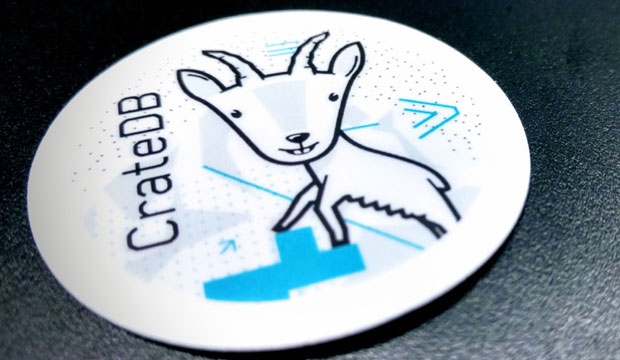Crate.io on Tuesday announced an upgrade to its open source CrateDB, and introduced a commercial version. The database now is available as a managed service as well.
CrateDB 2.0 features clustering enhancements and SQL improvements. The enterprise edition adds authentication and authorization features for enhanced security, which are not provided in the open source version.
It also includes performance-monitoring tools and support for user-defined query functions to enable more advanced in-database analytics, said Andy Ellicott, chief marketing officer at Crate.io.
CrateDB is an open source SQL database for real-time analytics of Internet of Things and machine data. Its typical work uses include manufacturing sensor data and device-generated GPS data.
CrateDB makes machine data applications that previously were found only in NoSQL solutions available to mainstream SQL developers.
“CrateDB 2.0 is designed to handle a fire hose of messy data and acquire it in real-time,” Ellicott told LinuxInsider.
What CrateDB 2.0 Does
CrateDB provides the ability to run a distributed SQL query engine for faster Joins, aggregations and ad-hoc queries. It also provides support for real-time and predictive analytics on geospatial, time series, full-text, JSON and other structured and unstructured data. It includes container architecture and automatic data sharding for simple scaling.
CrateDB combines SQL functionality with search. It often replaces Splunk due to SQL ease of use and integration.
The new feature set includes clustering upgrades with improved performance and resiliency.
CrateDB 2.0 generates faster aggregations and group-by query performance, noted Ellicott.
Its new index structure allows for faster range queries and queries on IP address data types. It comes with SQL improvements, aggregations on Joins, Sub-selects, Table renaming and reindexing.
The enterprise edition offers enhanced security via authentication and authorization capabilities. It also has better database performance-monitoring capabilities via a new user interface with native performance-monitoring tools and third-party monitoring JMX integration. It also has user-defined functions via SQL/Javascript.
Service Option
CrateDB 2.0 is also available as a managed service provided by Crate.io. It gives users a flexible deployment option that allows enterprises to offload time-consuming and costly database administration responsibilities to CrateDB staffers.
This strategy can ensure maximum uptime and efficiency. Customers can run the managed service on both public and private cloud platforms.
The managed service can reduce customers’ DBA overhead. It is available as a monthly, per-cluster fee, starting at $500.
As an IoT tool, CrateDB manages data generated by sensors, GPS tech, machine logs, and smart homes and vehicles.
IoT Pushing Adoption Rate
Crate.io is seeing increased demand for its alternative database for IoT needs. CrateDB is an ideal platform to handle more data, more complexity, and more automation with ease and in real time, according to Ellicott.
“CrateDB 2.0 contains many customer-driven enhancements, and our team is excited to continue breaking new ground in machine data during the months and years ahead,” said Christian Lutz, CEO of Crate.io.
Performance is part of that driving factor. Compared to PostgreSQL, CrateDB runs complex queries 29 times faster at a hardware cost that is 30 percent lower, according to Ellicott.
“IoT has been around for a few years. A couple of things are all of a sudden driving a lot higher demand for that,” he said.
“Data management capabilities are becoming essential,” Ellicott continued. “People are understanding that there is greater value in putting IT infrastructure data to work. Industrial IoT is starting to take off. That is becoming a big vertical for us.”
New Database Needs
Software companies that package commercial off-the-shelf IoT systems now are building them to meet the enterprise demands expected in a year or two, said Ellicott. Manufacturing companies are starting to see that more intelligent use of the data they already are generating is worth more than machinery and automation upgrades.
“There is a lot of value in IT event data for security protection, digital user experience and monitoring,” Ellicott noted. “Companies are starting to innovate to get ahead of enterprise demand.”
Crate.io pitches its database solution as one that blends the best parts of SQL, NoSQL and open source. That is, it delivers exceptional database performance but can utilize a wide range of open source tools, observed Charles King, principal analyst at Pund-IT.
“It is also optimized for clustered containerized environments. Crate also claims that its offerings support far higher data ingestion performance than other SQL solutions,” he told LinuxInsider.
Nontraditional Solution
CrateDB could offer businesses a better option for emerging IoT technologies.
Traditional SQL databases tend to be fairly rigid in terms of architecture, according to King.
Other SQL database products often leverage proprietary tools that make them less than optimal for parsing the machine data that is commonplace in IoT environments, he pointed out.
“Conventional wisdom suggests that SQL databases, including relational solutions like Oracle and DB2, are best for traditional database functions,” King noted.
NoSQL is better for emerging workloads and unstructured information — but that assumption is rapidly becoming dated, as SQL databases evolve to take on new tasks and functions, he said.
“It’s not a black and white issue,” King acknowledged, “but it’s one businesses should consider carefully before investing in IoT solutions.”






















































